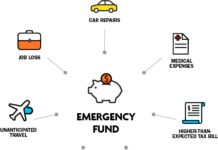Day trading has become very popular nowadays, with more and more people turning to the stock market since 2020. Canada is no exception. If you know what you are doing, this can turn out to be a good opportunity. However, if you don’t know the rules for trading, then things could end up badly for you.
Rules are necessary not only for success but also to prevent you from getting in trouble with the law. That being said, Canadian trading is overseen by different authorities. This means that the procedure may be different from that in the United States. Forex brokers accepting clients from Canada will need to follow the rules below.
1. PTD Rule Doesn’t Apply
In the United States, if your margin account has less than $25,000, then you will not be allowed to make more than three day trades per week. This is referred to as the PDT (Pattern Day Trading) rule, and you are only considered a real day trader if you can meet those requirements. If your margin account is lower, then the PTD Rule will limit your trading.
In Canada, you are exempt from this rule. You have no limit on the trades that you can make, regardless of whether you have $25,000 in your margin account or not. You can trade US options, ETFs, and stocks even if your account balance is low.
2. Day Trading Is Taxable
Like any other employment income, day trading is taxable under Canadian law by your marginal rate. That’s a rule you cannot do anything about. Stocks and other similar assets are treated as inventory, and once they are sold, all the profit you make from them is taxable.
With that in mind, only half of your capital gains are subjected to tax. If you experience any losses during day trading, they can be deducted from tax against your income. The expenses that you cover during day trading can also be subject to deduction, similar to regular employment.
3. Canada Has a Superficial Loss Rule
The regulations and rules for Canada also cover a 30-day rule, commonly referred to as the “superficial loss rule.” This rule becomes relevant when your capital gains are denied.
When a superficial loss takes place, you cannot claim a capital loss. Depending on the circumstances, it may be partially denied, disallowed permanently, or included in the base of adjusted costs for other shares. To prevent any issues, the superficial loss rule kicks in 30 days before the sale and ends 30 days after the sale.
The point of this rule is to stop taxpayers from performing fake transactions to cause capital loss. If it weren’t for this rule, people could sell their assets, trigger capital losses to earn money, and then sell the share immediately. The superficial loss rule limits Canadians from being fair.
4. Day Trading Isn’t Allowed in a TFSA
In the United States, people often day trade in TFSA (Tax-Free Saving Accounts), as it is a good strategy to save money on the trades. It is also one of the reasons why trading platforms do not impose any limits on the TFSA account. As far as they are concerned, you can do the trades however you see fit, as long as you meet their rules and regulations.
With the Canadian government itself, things take a different stand. If your account gets audited, things can become fairly complicated. If the Canada Revenue Agency audits your TFSA account and classifies your money as business income, you can be penalized. When this happens, you need to pay due taxes on the business income of your TFSA account.
5. You Have No Limit on Tax Deductions from Losses
If you have a normal income, the U.S. allows you to deduct up to $3,000 worth of capital losses. That being said, the capital losses you have in Canada will only be deductible against the potential gain. This rule that the Canadian government imposed can turn out to your advantage.
In Canada, only 50% of your capital gains from day trading are taxable. On the other hand, employment and business income are completely subjected to tax. Any capital losses that you experience will not be deducted based on your employment income.
The Bottom Line
Canada may have different rules for day trading based on the platform that you use, but for the most part, you need to follow those set by the government. This will prevent you from hitting a wall with the law or from having issues with the IRS.












